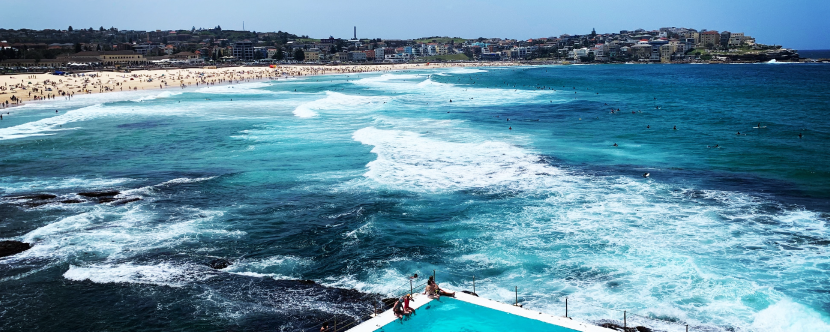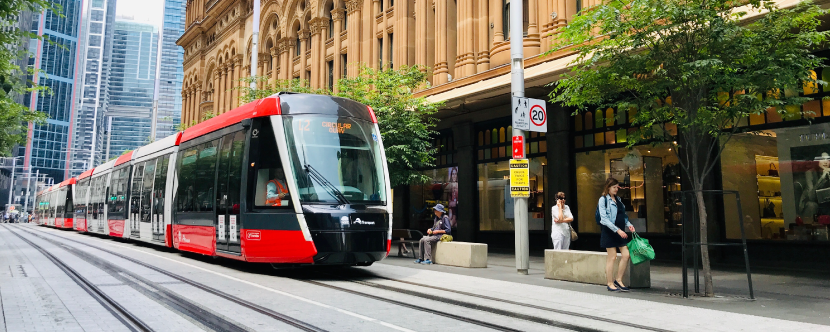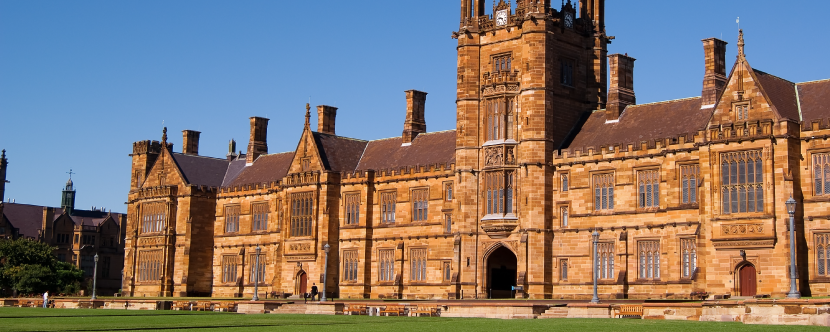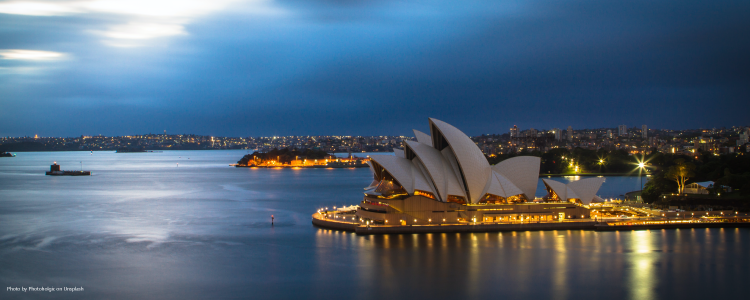The prospect of moving to Sydney, Australia’s vibrant capital, is undeniably enticing. It’s no wonder that this diverse and captivating city consistently ranks among the top 10 most liveable cities in the world. With its iconic skyline and rich cultural heritage, Sydney attracts an impressive 10 million visitors annually.
The sweeping metropolis sprawls across almost 12,500 km2 and houses a permanent population of 5.2 million. While best known for its iconic views of the Sydney Harbour Bridge and Opera House, Sydney offers an impressive diversity of living environments for newcomers from inner-city cultural districts to lower density leafy suburbia all located within 50km of the CBD and Airport.
Here are some fun facts about Sydney;
- The Sydney Harbour Bridge is the widest long-span bridge in the world and is known by the locals as “The Coat Hanger” due to its unique, distinctive shape.
- Sydney is Australia’s tech capital with 76% of Australia’s IT headquarters located within the greater Sydney region.
- The Sydney tower opened in 1981, was at that point was the tallest structure in Australia; today, it is the 5th tallest.
- English, Arabic, Cantonese, Mandarin, Greek, and Vietnamese are the 6 most common languages other than English spoken in Sydney.
- The iconic Sydney Fish Market is the largest market of its kind in the Southern Hemisphere.
- The Sydney region has been inhabited by indigenous Australians for at least 30,000 years.
The Sydney lifestyle

The largest capital city in Australia; Sydney is also a distinctly multicultural city. Over a third of Sydney residents were born overseas and have migrated to Australia permanently. The glittering harbour city is bordered by magnificent national parks, sandstone cliffs and sandy beaches.
Sydney is blessed with a humid, subtropical climate – the winters are mild but cool at night, and the summers are hot with balmy evenings. The average maximum temperature in the height of summer is 28 degrees, and in the winter, 17. Overnight the average minimum is 19 degrees in the summer and 8 degrees in mid-winter.
With its extensive coastlines, a day at the beach is a standard summer activity for many people living in Sydney. There are stunning and well-preserved national parks within driving distance from Sydney CBD, such as Ku-ring-gai Chase located 13 kilometres north from CBD, Blue Mountains National Park located 67 kilometres west, and Royal National Park located 57 kilometres south. Camping and hiking are extremely popular pastimes for Sydneysiders and are highly recommended as a welcome break from the hustle and bustle of densely populated areas.
As a centre of diverse arts and culture, Sydney offers a plethora of art galleries, museums, and historical architecture and cultural festivals all year round such as;
- The world-famous annual Sydney Mardi Gras Festival, one of the largest such festivals in the world, and the largest Pride event in Oceania.
- Vivid Sydney, an annual festival of light, music, and ideas. It includes outdoor immersive light installations and projections, performances by local and international musicians, and an ideas exchange forum featuring public talks and debates with leading creative thinkers.
- Lunar New Year is a shared celebration for many cultures represented in Sydney, including Chinese, Vietnamese, Thai and Korean communities. Sydney Lunar New Year festival celebrates oriental cultures across arts, food, and sports, and is the largest of its kind outside Asia.
For What’s On in Sydney, visit the official tourist guide for Destination NSW here.
If serene walks are more down your alley, be sure to visit the Nature and Parks guide here.
When moving to Sydney, we guarantee that there’s something for everyone.
Reasons for the move
As previously discussed, Sydney offers a multitude of possibilities. When contemplating where to establish roots, it is crucial to take into account the motivations behind moving to Sydney.
A single professional moving to Sydney, with a desire to live within a close cultural community would more likely consider dense inner-city residences and share accommodations within Camperdown, Ultimo, Newton or Glebe amongst other inner-city suburbs. Whilst accommodation is likely to be both more expensive and much less spacious than other areas of Sydney, it is more likely to be in closer proximity to the CBD, trendy nightlife establishments, and a diverse choice of social and cultural venues.
Someone moving to Sydney with a family or with the preference for more roomier living arrangements will be more likely to focus on Sydney’s southern or western suburbs, where residences are more affordable and spacious. The trade-off comes with a longer journey to the city, however it’s important to remember that Sydney CBD is not the only cultural center within the capital. Parramatta, Strathfield, Miranda and Hornsby are all multicultural hubs located within 35kms of the Sydney CBD. These possess expansive shopping districts, hospitality and nightlife experiences reflective of their unique and diverse cultural demographics.
Living Costs
Unfortunately, here comes the bad news. If you’re looking for a city with a cheaper cost of living, Sydney is not the best choice of destination. Sydney consistently ranks within the top 10 of the most expensive global cities and is the most expensive reported Australian city in terms of cost of living. The slightly more positive news is that outside renting property – the cost of groceries, utilities and recreation are comparable to, or often less expensive than other Australian capitals.
Below are average costs you can expect to encounter when moving to Sydney for rent, transportation, recreation and hospitality.
Rent per Month
| Item | Average Price | Expected Range |
| Apartment (1 bedroom) in City Centre | $2591 | $2,000-$3,200 |
| Apartment (1 bedroom) Outside of Centre | $1829 | $1,500-$2,357 |
| Apartment (3 bedrooms) in City Centre | $4,977 | $3,600-$10,000 |
| Apartment (3 bedrooms) Outside of Centre | $2,263 | $1,900-$8,900 |
Transport
| Item | Average Price | Expected Range |
| One-way Ticket (Local Transport) | $4.20 | $3-6 |
| Monthly Pass (Regular Price) | $213.40 | $160-280 |
| Taxi Start (Normal Tariff) | $3.80 | $3.20-5.00 |
| Taxi 1km | $2.20 | $2-5 |
| Taxi 1 hour Waiting | $56.68 | $50-$75 |
| Petrol (1 litre) | $1.47 | $1.20-1.75 |
Restaurants
| Item | Average Price | Expected Range |
| Meal, Inexpensive Restaurant | $18.00 | $12-38 |
| Meal at McDonalds (or Equivalent Combo Meal) | $12.00 | $10-13 |
| Domestic Beer (500ml draught) | $8.00 | $5-11 |
| Imported Beer (330ml bottle) | $8.00 | $6-11 |
| Cappucino (regular) | $4.17 | $3.50-5.50 |
| Coke/Pepsi (330ml bottle) | $3.15 | $2-4.50 |
| Water (330ml bottle) | $2.68 | $2-4 |
Information: https://www.numbeo.com/cost-of-living/in/Sydney
Public Transport

Even with its widespread suburbs and attractions, Sydney is a relatively easy city to get around by both car and public transport. An efficient network of transport options makes travelling to attractions in Sydney both affordable and convenient. The Sydney public transport system, provided by Transport for NSW, consists of trains, buses, ferries and light rail.
Public transport is used across Australia by locals, commuters and visitors alike, and Sydney is no exception. Public transport in Sydney is easily navigated by using an Opal Card, a travel card which consolidates transport payments for buses, trains, ferries and light rail. An Opal Card can be topped up at convenience stores and most train and ferry terminals. The Opal network includes services in Sydney, the Blue Mountains, Central Coast, Hunter Valley, Illawarra and the Southern Highlands.
Helpful Hint: Opal cards are sold from participating newsagents, all 7/11 outlets, post offices and at most train and ferry terminals.
Helpful Tip: Planning a trip prior to leaving is the best option before heading out and about. Visit the transport NSW website to use the helpful Trip Planner tool.
Trains
Before embarking on a train journey around Sydney, it’s helpful to ensure that the route is planned. Most trains do not stop at all stations, and it’s important to know what route goes where prior to boarding. Sydney trains can get very hot during summer, especially non-peak services that may be serviced by older trains, so it helps to be prepared and have a bottle of water handy.
If traveling alone after sunset, it’s highly recommended to avoid mostly deserted carriages, and sit towards the middle carriage which has a train guard. This carriage is marked with a blue light.
At night, between midnight and 4.30am, Nightride buses replace trains. These do not always travel along the same routes as trains, and it’s best to check ahead. These buses can be busy on Fridays and Saturdays, and the driver can assist in arranging a taxi at the destination.
Buses
The Sydney Bus network is supported by public and private bus companies however it will be tough to tell the difference as Opal access and fees are centralised.
When waiting for a bus especially at non-peak stops, it’s essential to signal the driver to stop with an outstretched hand, otherwise the driver may not stop. Similarly, to get off, ensure the driver is aware by pressing the Stop button on the bus. Opal cards must be used to tap on and tap off the bus at designated points.
When travelling by bus during peak hour, it’s important to bear in mind that buses will tend to be quite delayed, especially around CBD areas. Allowing extra time to travel at peak hour times is essential to ensure timely arrival.
Helpful Tip: If travelling in an unfamiliar area, the TripGo app is very handy to have. If GPS tracking is enabled, the app will be able to see upcoming bus stop locations and assist in pressing the Stop button at the right time.
Driving around Sydney
Those moving to Sydney from other states will need to apply for a NSW driver or rider license within three months of arriving. In NSW, it is always essential to carry a driver’s license, and failure to comply with this requirement is penalised by the Police.
These are the important things to remember while driving around Sydney;
- Speed limits through residential areas are generally 50km/h. On Sydney’s motorways, the speed can be as high as 110km.
- Wearing a seatbelt is always required while driving in Sydney, and heavy penalties and license demerits apply.
- Roads can become heavily congested right around the city during peak hour, which can extend from as early as 3.30 pm to 6.00 pm
- Speed limits of 40km will apply in designated school zones during certain hours – these are generally between 7.30-9.00am in the morning, and between 2.30-4.00pm in the afternoon. This is heavily regulated and penalties are severe.
Road Rules are developed at state government levels, and some rules for driving in NSW are different to those of neighbouring states.
Helpful Hint: Unusual or Unknown NSW-specific Road Rules can be found here.
Parking
In Sydney, parking on the CBD streets is scarce and comes with strict time limits, often requiring payment at a nearby meter. These meters will accept coin or card payments; however, card payments are relatively new and it’s always a great idea to be equipped with parking change.
In central Sydney, car parks are relatively common around the CBD areas, Kings Cross and Goulburn Street. At Sydney Airport there are various parking options both on-airport and off-airport.
Outside the CBD, street parking is legal where permitted. It is essential to keep an eye out for signs to avoid the risk of a parking fine, which can be above $400. Cars must always be parked in the same direction as traffic is heading, penalties can also apply there.
Employment
Sydney is a trade hub and a global city with ample opportunity for employment for those ready to hit the ground running. When moving to Sydney, it is important to know that recruitment practices are different based on the industry, and it can be a great idea to touch base with a local Sydney recruitment agency and have a chat about acceptable practices. If looking for hospitality work, it’s still quite common to see signs on windows prompting to apply within, and in these cases it’s most suitable to walk in, make an introduction, and chat about the opportunity with a senior on site.
Within white-collar industries, roles are generally offered through recruiters or listed through online facilitators such as Seek.com.au. Generally, in these cases, conventional methods such as dropping in with a resume are not acceptable and applications will need to be made online with a CV and a tailored cover letter outlining suitability.
Many employers will consider immigrating job seekers with adequate working rights, and those taking a strategic approach may be able to secure a role prior to landing through conducting a video interview process.
Helpful Hint: Initiate a search for work by accessing Seek.com.au to view availabilities by industry and area, or by contacting a local agent.
Family Living

Schools
There are over 1500 schools in Sydney that are public, private, faith-based or international, so finding the perfect school when moving to Sydney to suit individual needs is not too challenging.
All children must be enrolled in compulsory schooling by their 6th birthday. Primary school runs for seven years, starting at Kindergarten through to Year 6. High school is a further six years from 7 to 12. High school graduates can choose from a range of universities, technical and vocational colleges (TAFE) and specialised college institutions.
Enrolment is generally handled by schools individually, although the public-school system does operate geographically and most cater to enrolment for those children living within a certain local area region. The private school system is mostly decentralised within Sydney, and enrolments into a private institution are best handled directly with the school, by making an appointment with Admissions.
Searching for a local public in Sydney is very easy – visit the Department of Education NSW School Finder Tool here.
Pets
Within Sydney and greater NSW, a pet must be microchipped and registered on the NSW Pet Registry by the time it is 6 months old. Registration is done once and valid for the lifetime of the pet. A pet can be registered online through a Service NSW account, or by visiting a Service NSW registry. There are penalties applicable in the case that a pet is not registered or microchipped, and these can be significant, especially if the pet is deemed to be a dangerous or prohibited breed.
When moving to Sydney, it’s important to ensure that proof of ownership for the pet is retained for registration purposes. Enough information to identify and register a pet can be a bill of sale, a statutory declaration outlining proof of ownership, verification of existing microchip or a lifetime registration form.
Pet registration is also handled at local government level, and the best thing to do when settled into a new home is to contact local council offices to ensure that all the necessary paperwork is complete.
Helpful Hint: To find out more about registering pets within Sydney at greater NSW, head to https://www.service.nsw.gov.au/.
Why Grace Removals is your Top Choice for Moving to Sydney
Moving interstate can be a complex and overwhelming process, but with the right removalist by your side, it can become an exciting and stress-free experience. If you’re considering moving to Sydney, one removalist stands out from the rest – Grace Removals. With our exceptional services, industry expertise, and dedication to customer satisfaction, choosing Grace Removals for your interstate move to Sydney is a decision you won’t regret.
With over 100 years of experience in the removals industry, Grace Removals has established itself as a trusted and reliable name. We have helped countless individuals and families successfully relocate to Sydney and other destinations across Australia. As one of Australia’s premier interstate removalists in Sydney, our team of highly trained professionals understands the unique challenges and requirements of interstate moves, ensuring a smooth and efficient transition for you.
Don’t just take our word for it – Grace Removals has garnered a strong reputation and a loyal customer base over the years. Our testimonials from valued clients speak volumes about our reliability, professionalism, and dedication to delivering exceptional service. When you choose Grace Removals, you can have confidence in knowing that you’re selecting an interstate removalist in Sydney that has earned the trust and satisfaction of numerous customers.
Moving to Sydney is an exciting journey, and Grace Removals is here to ensure it’s a successful one. With their unmatched experience, extensive network, comprehensive services, commitment to customer satisfaction, and widespread trust, they are the go-to choice for your interstate move to Sydney. Choose Grace Removals and embark on your new chapter with peace of mind.


